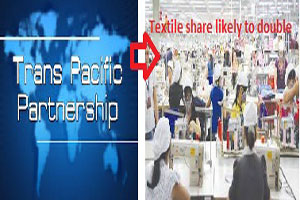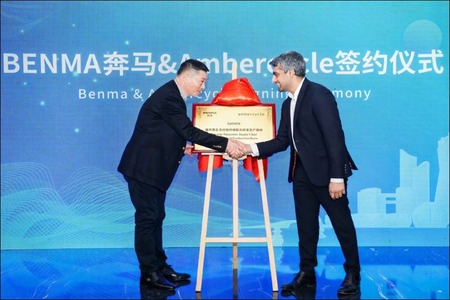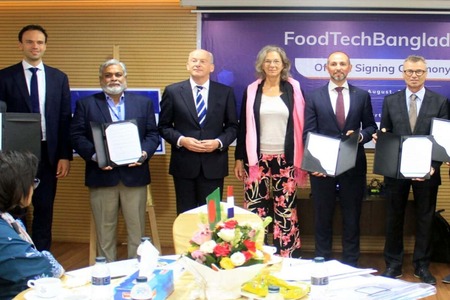
Vietnam textile share likely to double after the TTP is in place
YarnsandFibers News Bureau 2015-10-07 14:00:00 – SaigonThe Trans-Pacific Partnership (TPP) deal, which aims to liberalize commerce in 40 percent of the world's economy, was reached following days of negotiations in Atlanta on Monday. The deal is now pending approval by lawmakers in all TPP countries, which include Australia, Brunei, Canada, Chile, Japan, Malaysia, Mexico, New Zealand, Peru, Singapore, the U.S. and Vietnam. If approved, the TPP pact would cut trade barriers and set common standards for what will be the world's largest free-trade zone.
For Vietnam, the trade pact will brings both chances and challenges for Vietnam’s economy. Minister Vu Huy Hoang at the press conference following the TPP agreement announcement on Monday said that Vietnamese textile and garment industry plays a significant role in its’s economy and will thus benefit a lot from the TPP.
Hoang admitted that Vietnam is the weakest among the TPP economies, but the country is committed to fulfilling all requirements as set by the TPP.
Dr. Vo Tri Thanh, deputy director of the Central Institute for Economic Management, said that he had breathed a sigh of relief after learning that the TPP negotiations were concluded.
Even though it takes more time for the trade pact to be approved, the reached agreement is a positive sign for Vietnam’s economic reform and development. The TPP will have three important impacts on Vietnam.
It will help increase Vietnam’s exports, foreign investment and an impetus for the country to change its development model, said Dr. Thanh. The TPP comes just in time as Vietnam needs a motivation for changes that will lead to sustainable development.
Vietnam’s textile sector is currently selling 70 percent of its products to the other TPP countries and the share is hoped to be doubled after the trade pact is in place. The exemption on tariffs for many export commodities is also among the opportunities to come from the TPP for Vietnam, according to industry players.
Local apparel firms are confident that international customers will shift orders from China to Vietnam in order to enjoy the tax incentives of the TPP. In the meantime, the Vietnamese export sector will also face challenges such as stricter technical barriers and legal frameworks to export their products.
Vietnamese textile and garment businesses will also be confronted by a huge challenge from the “yarn forward rule of origin,†which means that all items in a garment from the yarn stage onward must be made in one of the countries that is party to the TPP agreement.
Vietnam’s textile and garment industries currently rely heavily on raw materials imported from non-TPP countries, particularly China, so will have to change their source of materials if they want to comply with the TPP rules.
The TPP would also increase Vietnam’s exports from the expected “baseline†in 2025 of $239 billion by $67.9 billion to $307 billion, AmCham Vietnam said, citing a study by Professor Peter Petri of Brandeis University and the Peterson Institute.
Market Intelligence
Ask for free sample Report

experience
Customer Base
dedicated team
Countries Served Worldwide









